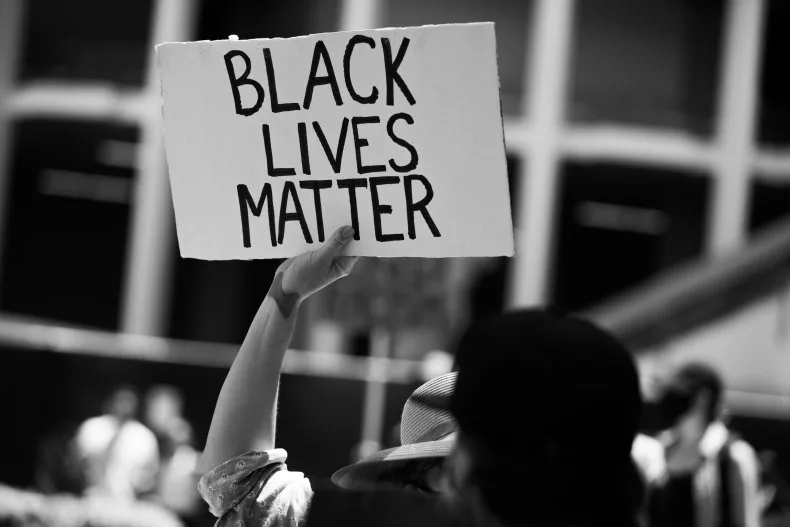Over the past three years, corporate America has ushered in a new era of Black entrepreneurship. Currently, there are more than 2 million Black-owned small businesses in the United States, and since the start of the pandemic, the number of new Black business owners rose 38 percent. Among this share of emerging business owners is largely Black women. As of this year, 17 percent of Black women are either in the process of launching or already running a new business. It’s encouraging to watch the expansion and growth of Black businesses—we’re seeing the needle begin to move, and the racial wealth gap start to narrow.
Despite this progress, Black entrepreneurs are struggling to stay afloat. With 8 out of 10 Black-owned businesses expected to fail within the first 18 months, it’s clear corporations need to step up their role in creating opportunities and expanding purchasing power for Black businesses.
This Black Business Month corporations have a responsibility to create an ecosystem in which Black businesses can sustain long-term, beyond just one month of the year.
Data shows Black entrepreneurs face disparities in funding—not only do they receive less than 1 percent of VC funding, but also start their businesses with over $70,000 less than their white counterparts. These funding gaps leave Black entrepreneurs needing additional support to succeed. Shelf space is not enough, and corporations that work with Black brands must create wraparound infrastructure within their business models to ensure Black entrepreneurs have the resources they need for their day-to-day operations.
The traditional supplier diversity framework has been around for years, and was created to provide minority-owned businesses equal access and opportunity. However, supplier diversity spending within corporate America is less than 5 percent with business owners of color. And for the few Black brands chosen, there is still a dearth of business development support from retailers and companies.
This reality begs the question: To ensure Black entrepreneurs are “business-ready” for long-term partnership, what is the sustainability plan?
For too long, corporations have tried to onboard Black businesses by simply sticking products on shelves, with little investment, only to then wonder why those products aren’t selling. Brand visibility on shelves is part of the solution, but Black brands need the support of their partners in every step of the business development process—start to finish.

Rich Fury/Getty Images
Retailers onboarding Black brands must fundamentally shift how they approach working with business owners. In the same way companies think about customer acquisition, retention, and loyalty, they must make the same investments into Black business innovation and product development. Company leadership must ask themselves: Am I ensuring all stakeholders are supportive of this brand, including merchants, buyers, and internal staff? Do we have programmatic supports in place, such as an incubator program or microgrants to help the brands we onboard scale and grow sustainably? It is crucial for companies to understand these nuances so Black entrepreneurs can succeed and ultimately drive revenue.
Additionally, just because brands are on the shelf does not mean consumers know about the products. There’s a difference between fully incorporating Black businesses into your marketing and visual merchandising strategy versus placing Black-owned products on an end-cap during Black History Month. Corporations need to provide Black brands with a dedicated marketing budget in order to effectively educate their customers and sell products—these entrepreneurs understand how to best reach their consumer base.
Supporting Black businesses is not a matter of charity or a box to check on their DEI initiatives—it’s good for business. Right now, the racial wealth gap is estimated to cost the U.S. economy between $1 trillion to $1.5 trillion from 2018-2028.According to 2020 census data, Black-owned businesses generated an estimated $141.1 billion in gross revenue.
Providing Black brands with the resources to succeed also gives companies the opportunity to gain buy-in with the next generation of consumers, which is estimated to maintain more than $360 billion in spending power. It’s no secret the consumer landscape is rapidly changing. Shoppers are no longer just focused on getting the products they need. They want to support brands that value diversity, equity, and inclusion.
These changes don’t happen overnight—they must come with buy-in from senior leadership. Decision makers must get uncomfortable with innovation and allow space for their companies to evolve. This means becoming braver about how we use our economic power to invest in people, technology, and new programs to address the barriers Black people face every day.
This Black Business Month, leaders must do their part in supporting Black entrepreneurs beyond just one month a year. This means going back to the drawing board on the commitments made three years ago, and working toward an environment that supports the development and growth of Black businesses, ensuring their long-term success.
LaToya Williams-Belfort is the executive director of the Fifteen Percent Pledge.
The views expressed in this article are the writer’s own.

